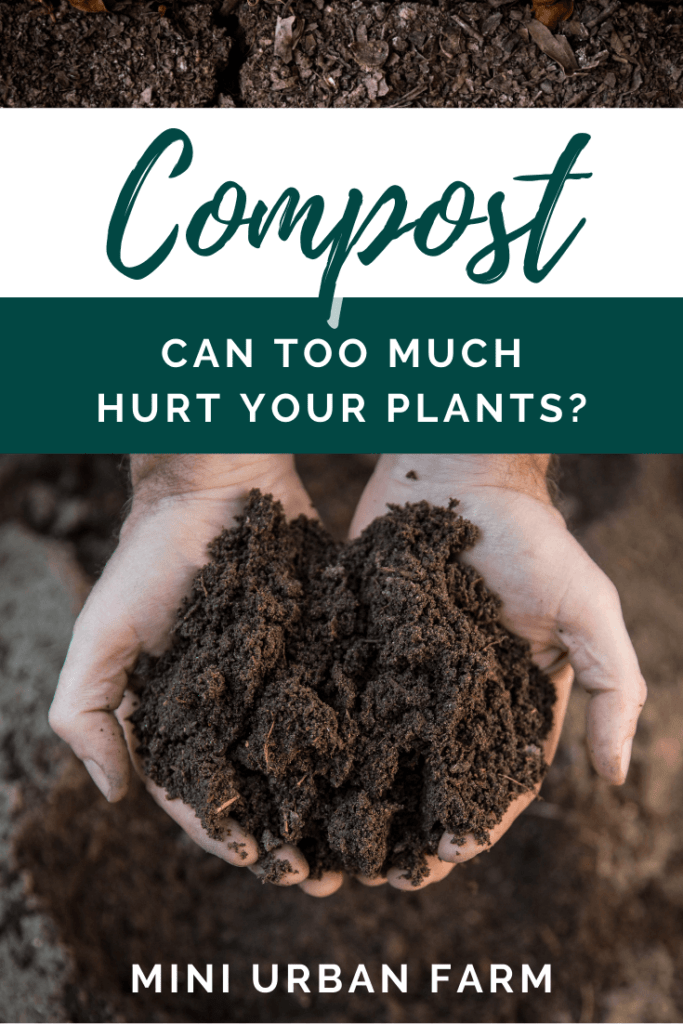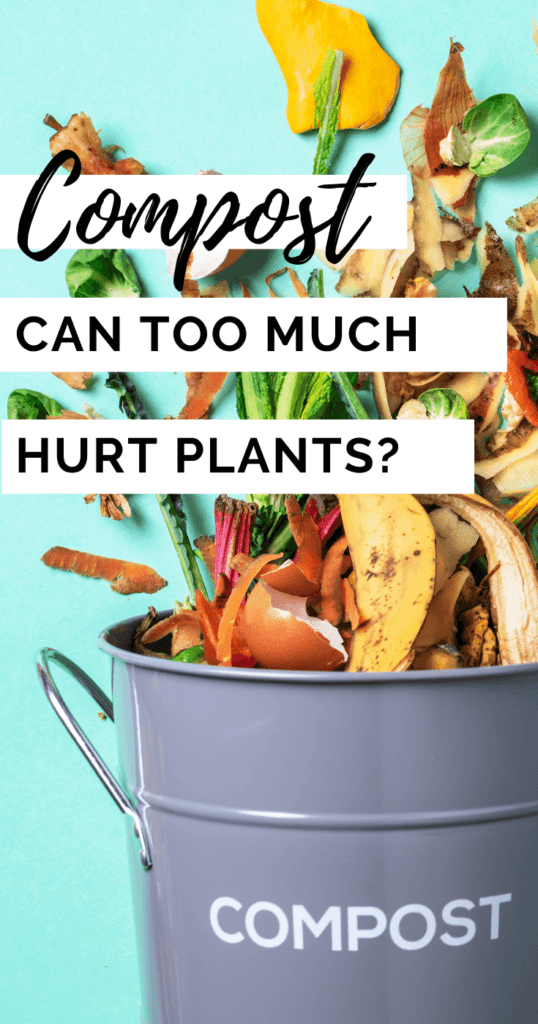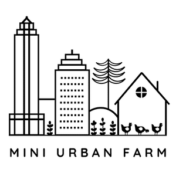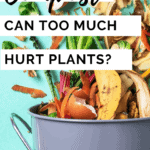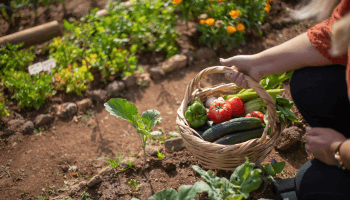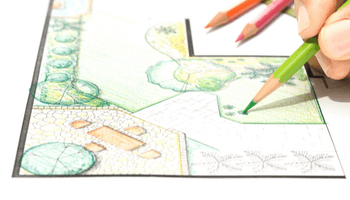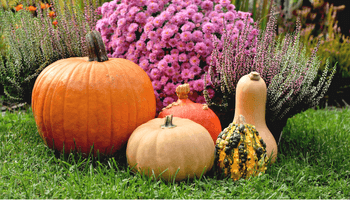As a beginning gardener, I would often pile compost on top of my potted plants, hoping that the added nutrients would make them grow faster and stronger. In fact, I would even forgo other types of soil and only plant seeds in compost without any other growing medium. Of course, some of the seeds did grow, but not well. Which left me wondering, can too much compost hurt plants?
While compost adds vital nutrients to the soil and is essential for good soil health, too much compost can hurt plants. As they say, too much of anything is a bad thing. There’s a few things to take into consideration when adding compost to your plants. These things include the age of the compost, the type of plant, and the existing nutrients in the soil.
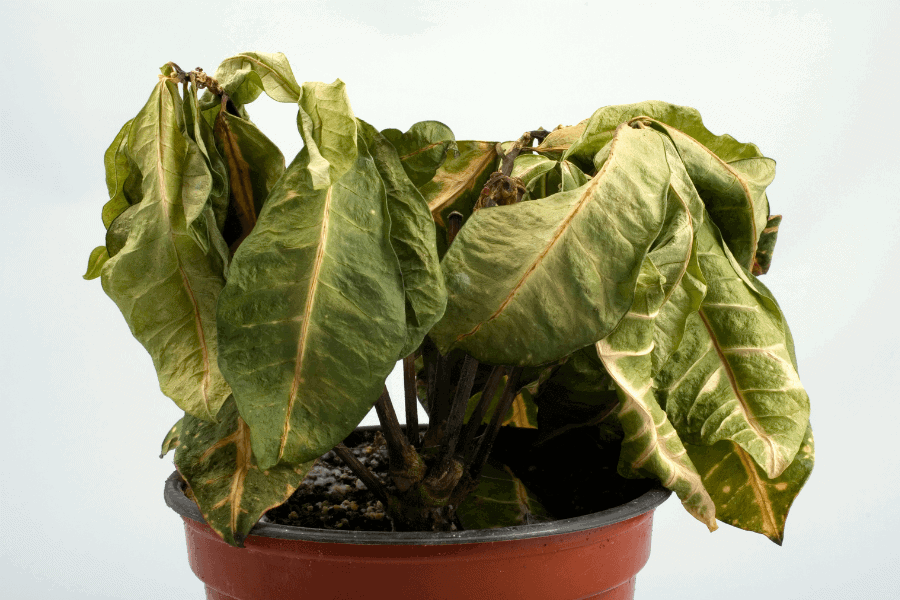
Disclosure: This post may contain affiliate links. If you purchase a product through one of our affiliate links we make a small commission from the sale at no extra cost to our readers.
What is Compost?
Compost is an organic material which is commonly referred to as black gold in the gardening world.
Basically, compost is formed when organic materials decompose. This can include kitchen scraps, dried leaves, chicken manure, etc.
When these materials decompose they leave behind a dark soil, rich in vitamins that help plants grow and do well.
Plus, making your own homemade compost is a great way to garden on a budget!
However, if compost is the only source of nutrition you provide to your plants then it might cause problems.
This is because compost is rich in only a few nutrients, not in all nutrients which plants need to thrive.
A base which is composed of only compost might even smother your plants to death.
According to the University Extension of Missouri, topsoil usually consists of 30% of organic material by volume.
If more organic material is added to the soil it would cause the soil to become very high in certain nutrients, which would be harmful to certain plants.
For example, the plants might grow very fast with the high volume of compost but not produce enough pesticide naturally. This could lead to diseases and pest issues in the plant.
Compost to Soil Ratios
An ideal way to go about this would be adding the compost to your existing topsoil or raised bed soil.
Topsoil erodes overtime and loses essential nutrients such as nitrogen. The same is true for raised bed gardens.
Adding compost before each planting season replenishes the nutrients and creates the ideal planting base for your plants to flourish.
For my raised beds, I never add in more than 30% compost. The rest of the soil is made up of peat moss, topsoil, and perlite.
The exact amount of compost you will need to add will depend on your existing in-ground soil.
So to be safe, getting a soil testing kit is an excellent way to determine when nutrients your soil needs.
No Dig Garden Beds
A no-dig garden is a method of gardening developed by Charles Dowding where you add a thick layer of compost on top of an in ground bed.
As the name suggests, you would not dig up the soil in this bed, but rather, keep adding compost to the top of the bed with each passing season.
But wouldn’t the compost hurt the plants in this type of bed?
The simple answer is no – and here’s why.
Top dressing the existing bed with compost adds nutrients to the soil which make their way down to the plant roots.
The plant roots however, are not growing solely in compost, they are growing in the in-ground medium which can be different types of soil depending on where you live.
By adding the compost, you are essentially amending the existing soil over time, allowing for plants to thrive no matter what type of soil you have.
Psst…want to fast track your garden? Get access to my FREE gardening resource library and start maximizing your garden today!
Phosphorus and Nitrogen in the Soil
If the compost is manure-based the ratio of nitrogen to phosphorus is nearly 1:1.
Plants utilise Nitrogen much quicker than phosphorus. And nitrogen is also converted into N2 or N2O gases which escape into the air.
If nitrogen content is in excess and not utilised by the plant, it leaves the growing layer of the soil in the form of gas or is washed away by the rain or flowing water.
Hence, when all the nitrogen reserve is depleted in the soil the only nutrient left would be phosphorus, which moves through the soil at a very slow rate.
Phosphorus cannot escape the soil in the form of gases, or be washed away as easily as nitrogen.
Therefore, excess phosphorus remains in the soil for longer periods compared to nitrogen.
Even plant-based compost contains phosphorus. So if you add compost to your garden annually, this would mean that each year a layer of phosphorus accumulates the garden soil until potentially reaching a toxic level.
High Phosphorus Levels can be Toxic
Soil which is high in phosphorus contents makes it difficult for the plants to absorb iron and manganese.
This can cause severe nutritional deficiencies in the plants and can be seen in the form of chlorosis of the leaves – or the leaves losing their bright green color.
High phosphorus levels are also poisonous to the mycorrhizal fungi.
This fungus is an integral element for the landscape plants as they provide water, phosphorus and other essential nutrients to the plants. Without these fungi, the plants would require more energy and make larger roots so that they can uptake the water and the essential nutrients required.
As the focus of energy is now shifted to making larger roots, the plants lack the energy to grow, flower or give fruits in the same way as they would if the soil had enough mycorrhizal fungi present.
Soil Testing
As you can see, different nutrients in the soil have the ability to cause harm to your plants, even killing them in extreme circumstances.
Top dressing your beds with compost at the end of each season is an easy way to add nutrients back in, but should always be done in moderation, since too much compost can hurt plants!
Testing your soil through your county’s extension office, or by using an at-home soil testing kit, can help you determine which nutrients your soil is deficient in, and help you add in nutrients as needed.
Ways to Use Compost
Compost has many uses and can improve the quality of your soil exponentially if added property.
After all, there’s a reason why gardeners call it black gold.
Below are a few ways to use compost, and how to apply properly.
Grass Yards
Compost can be added to your grass to give it that lush look.
Once the compost is dark and crumbly spread lightly over the grassy areas of your garden.
If there are areas in the garden without any grass, compost can be spread over the topsoil as well and raked into the dirt to give the soil further nutritional content.
Annual Vegetable Gardens
If you have in-ground gardens, you can add compost to the raised beds to make the soil composition more nutrient-packed.
The best time to do this is after the end of each season.
Once you rip out your annuals for that season, top dress the soil with compost and any other amendments, allowing your soil to soak in the nutrients before planting out for the next season.
Perennial Plants
Perennials can also benefit from top dressing with compost.
As time passes, the plants absorb the nutrients they need from the soil, leaving the soil depleted.
In order to replenish those nutrients, add an inch of compost under the base of your plants, watering in well right after.
Is Compost Harmful for People or Pets?
The composting process takes place in four stages before reaching full maturity. The decomposing pile will have bacteria and mold during the composting stages which are harmful to animals and humans. Be sure to keep the compost pile covered, though, as compost is dangerous during the breakdown process and needs to be kept away from animals. Once the decomposing materials are fully cured then it is safe and can be used by the plants.
What is the ideal ratio of soil to compost?
Compost to soil ratios vary depending on who you ask and what type of soil you have. Usually, 20 % to 50% compost is recommended so that plants can also benefit from less dense growing mediums such as peat moss and perlite.
What is the most ideal compost for vegetable gardens?
The most ideal compost for vegetable gardens is loam-based compost. Loam-based compost is soil-based and is made from a mixture of loam, peat and grit or sand. It also consists of plants foods which add to the nutritional content of the compost. Loam-based compost contains small amounts of nutrients which encourage the germination process and growth of tiny shoots and roots.
Too much of a good thing can be a bad thing! This is true for adding in any amendments to your soil. So before you add in more compost think about how often you are adding it, how much you are adding, and if the plants really need it! I add more compost once per year, and amend the soil with other fertilizers as needed. Depending on your soil type and growing zone, you may need to add more or less compost to your soil. So always check with your county’s extension office if you aren’t sure how much compost your soil needs!
I hope this was super helpful! And for more gardening resources, get access to our free gardening resource library! It will help you fast track your garden and it only takes 5 seconds!
Pin Can Too Much Compost Hurt Plants!
